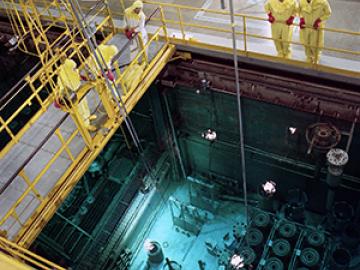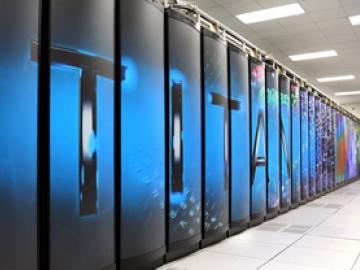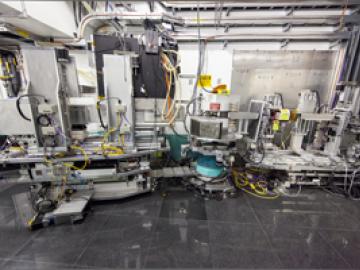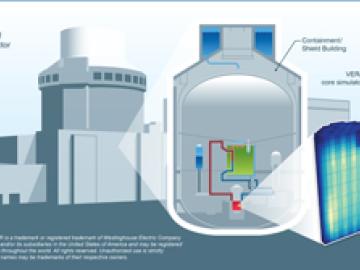Filter News
Area of Research
- (-) Climate and Environmental Systems (4)
- (-) Nuclear Science and Technology (5)
- Advanced Manufacturing (3)
- Biological Systems (3)
- Biology and Soft Matter (3)
- Building Technologies (3)
- Chemical and Engineering Materials (2)
- Chemistry and Physics at Interfaces (5)
- Clean Energy (19)
- Computational Biology (1)
- Computational Chemistry (4)
- Computational Engineering (1)
- Computer Science (1)
- Earth Sciences (1)
- Energy Frontier Research Centers (6)
- Fuel Cycle Science and Technology (1)
- Functional Materials for Energy (8)
- Geographic Information Science and Technology (1)
- Materials (31)
- Materials for Computing (7)
- Materials Synthesis from Atoms to Systems (8)
- Materials Under Extremes (5)
- Neutron Data Analysis and Visualization (2)
- Neutron Science (6)
- Nuclear Systems Technology (1)
- Quantum Condensed Matter (2)
- Renewable Energy (1)
- Sensors and Controls (1)
- Supercomputing (15)
- Transportation Systems (3)
Media Contacts

Blowing bubbles may be fun for kids, but for engineers, bubbles can disrupt fluid flow and damage metal.

The High Flux Isotope Reactor, or HFIR, now in its 48th year of providing neutrons for research and isotope production at the Department of Energy’s Oak Ridge National Laboratory, has been designated a Nuclear Historic Landmark by the American Nuclear Society (ANS).

depth, population-based approach to identifying such mechanisms for adaptation, and describes a method that could be harnessed for developing more accurate predictive climate change models. For the U.S. Department of...

A team representing Westinghouse Electric Company and the Consortium for Advanced Simulation of Light Water Reactors (CASL), a Department of Energy (DOE) Innovation Hub led by Oak Ridge National Laboratory (ORNL), has received an International Data Corporation HPC Innovation Excellence Award for applied simulation on Titan, the nation’s most powerful supercomputer, which is managed by the Oak Ridge Leadership Computing Facility at ORNL. s

Oak Ridge National Laboratory researcher John Wagner has been named a 2013 recipient of the Department of Energy’s Ernest Orlando Lawrence Award for his work in advancing computer, information and knowledge sciences.

Thomas Wilbanks and Benjamin Preston, both of the Climate Change Science Institute (CCSI) at Oak Ridge National Laboratory (ORNL), are among the 309 coordinating lead authors of the Intergovernmental Panel on Climate Change’s (IPCC’s) Working Group II (WG II) report.

Carbon dioxide in the atmosphere may get the lion’s share of attention in climate change discussions, but the biggest repository of carbon is actually underfoot: soils store an estimated 2.5 trillion tons of carbon in the form of organic matter.

Former Energy Secretary Steven Chu mixed his Wigner Distinguished Lecture on Feb . 12 with a description of his current research at Stanford and his outlook on energy policy and climate change.

Scientists and engineers developing more accurate approaches to analyzing nuclear power reactors have successfully tested a new suite of computer codes that closely model “neutronics” — the behavior of neutrons in a reactor core.




